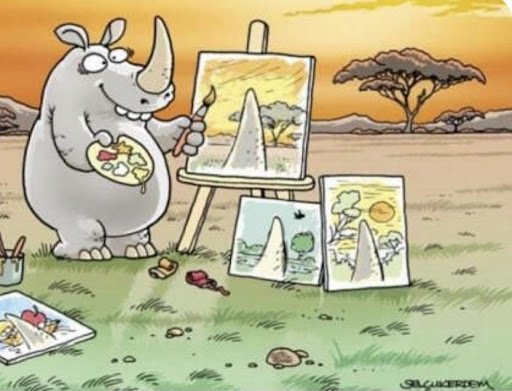
Leonardo Da Vinci’s “The Last Supper” is one of the most famous expressions of “linear perspective” in art.

It also represents one of my favourite lessons for life and leadership!
Painted on the wall of the Refectory of the Convent of Santa Maria delle Grazie in Milan, Italy in the late 1490s, The Last Supper came not long after Fillipo Brunelleschi popularised the linear perspective technique. There is some debate about whether perspective art was also around in more ancient times, but it was Brunelleschi who conducted a series of experiments in around 1420, during the time of the Florentine renaissance, to recreate what we know today as linear perspective. Brunelleschi was also the genius who engineered the incredible dome on the top of the Florence cathedral.
The essential concept of linear perspective is to orient a drawing around one or more points of reference. One of the earliest works of perspective art using a single “vanishing point” was by Masolino da Panicale in 1423.

Masolino da Panicale's “St. Peter Healing a Cripple and the Raising of Tabitha” (c. 1423)
I can remember learning perspective drawing in my High School Technical Drawing class. I remember designing and drawing houses using this perspective - but I’m afraid none of my work will hang in a famous gallery or be recorded in the annals of art history!
Leonardo’s masterpiece of The Last Supper focuses on a single “vanishing point”. I think Leonardo’s intent is pretty clear - Jesus is the centre.
Leonardo’s masterpiece of The Last Supper focuses on a single “vanishing point”. You can easily conduct your own experiment by lining up a ruler of the walls, ceiling and table and see that the whole fresco focuses on the face of Christ - he is the focal point of the painting. Leonardo was no doubt making a point about the place of Christ in both this scene, and in history. No matter what you have read or watched in “The Da Vinci Code” I think Leonardo’s intent is pretty clear - Jesus is the centre.
If you look closer at the painting, there is a lot of drama going on around Jesus - from Judas looking like the odd one out holding a bag or coins, to John in deep conclave with Peter, and then Thomas waving his finger to make a point. It is said that this picture portrays the moment and reaction of the 12 disciples when Jesus told them one of them would betray him. It is a moment captured so masterfully by Da Vinci.
One of the most surprising facts to me about this painting is where it is located. I expected it to be housed in a great cathedral or palazzo or prominent gallery, but it instead remains on the wall of a Church cafeteria - the Refectory at a Convent. This would have been a room used for communal daily meals of those in the convent - nuns and maybe some monks and guests.
It is likely that the convent would have been furnished with several other long tables, just like the one Leonrado painted and it perhaps explains why he chose this arrangement for the scene. It is like he wanted Jesus’ table to be seen alongside the regular tables, as if those in the room are dining along with Jesus and the 12 disciples.
As the nuns and their guests ate their meals it was as if they were dining with Jesus, and the impact of the linear perspective, would focus their attention on Jesus.
When I’m feeling stressed, worried or concerned about a matter, “getting perspective” can make all the difference.
Imagine having Jesus at your table as you discuss the problems, challenges, current events and issues of the day. You could draw your focus to Jesus, and include him in the conversation. What difference would that make?
It makes all the difference in the world to me, on two levels -
First, when I’m feeling stressed, worried or concerned about a matter, “getting perspective” can make all the difference. Taking a step back from a situation, listening to others’ perspectives, looking at it from another angle, can help me get a better perspective on my problem or situation. I like the line from American Poet, Wallace Stevens - “Perhaps the truth depends on a walk around the lake”.
Second, when I’m feeling stressed or worried I can be reminded to turn my eyes towards Jesus, and consider what he might say in a situation. Perhaps he might say to me “do not fear, do not worry, we can work it out”.
“I PROPOSE TO BUILD FOR ETERNITY.”
— Filippo Brunelleschi
Too often I feel more like the humorous picture below of the Rhinoceros trying to paint, but he can't see past his own nose!

Artist Unknown
It may look silly, but the reality is this is often how we approach our problems - we seem unable to get past our own viewpoint to put our problems in wider perspective.
Whatever way you look at it, I have found this concept of perspective immensely helpful in both life and leadership. Next time you are in a tough situation and can't see a clear way forward, perhaps it's time to take that step back, get some extra perspective, and see if it changes things. In the total span of our lives, even from the perspective of eternity, our current challenges may take on a new perspective.
Questions for reflection:
Are you facing a tough situation?
What happens when you take a step back, and look at if from a different angle?
Can you include Jesus in the conversation?
Read more of Roger's articles by clicking here.

